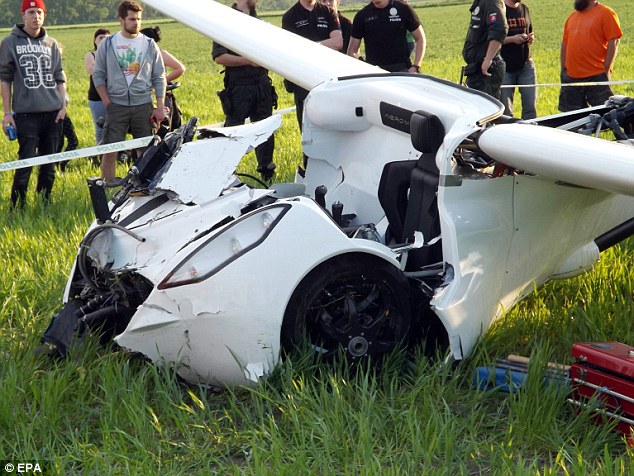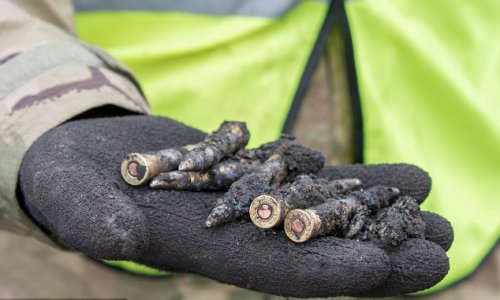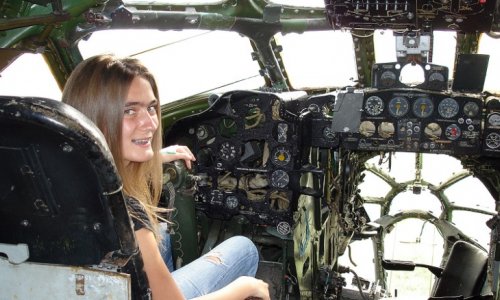The world's first flying car has spectacularly crashed during its maiden flight with the inventor on board after witnesses said it went into a tailspin.
Stefan Klein, the co-owner of tech company AeroMobil was taking the company's 3.0 prototype on a test flight in Slovakia last Friday.
Onlookers said the craft appeared to be in trouble before going into a tailspin, forcing Klein to deploy a parachute around 900ft off the ground to help bring the car down as gently as possible.
While the impact was enough to leave the vehicle itself in a crumpled mess, Klein survived and was taken to hospital with only minor injuries.
But there was no word on how the accident would affect the release date of the hybrid vehicle, which was due to go on sale in the next two years.
In a statement, which fails to mention the crash itself, AeroMobil said: 'The AeroMobil 3.0 experimental prototype is currently undergoing a rigorous analysis and testing programme.
'During one of the test flights that took place on May 8, 2015, the inventor and test pilot, Stefan Klein, encountered an unexpected situation and activated the advanced ballistic parachute system in an altitude of approximately 300 meters (900 feet).
'The system has proved itself fully functional and landed the entire vehicle without any injury to the pilot. The detailed data and overall experience from this test flight will be thoroughly analyzed and the results will be used in the ongoing R&D and improvements of the prototype.
'Testing of the current prototype 3.0 and further product development will continue after the replacement of the damaged parts.
'In the process of developing new vehicles, especially in the prototype phase, the possibility and likelihood of an unexpected situation is a natural part of the testing program.
'This is a learning period which allows us to detect and subsequently refine our design. It is necessary to test the prototype in every way possible to establish its limits and to improve on them.
'The flight recording details will help us learn from the data and improve the performance of the vehicle prior to our next flight test.'
The company say it has been developing the vehicle since 1990, and has gone through several different models as the early versions struggled to function as cars.
The vehicle's Rotax 912 engines mean it is capable of refueling at any gas station, and when the wings are folded up it can fit into a regular parking space.
(dailymail.co.uk)





www.ann.az
Follow us !











